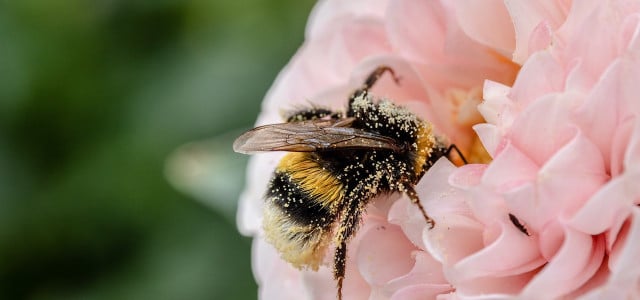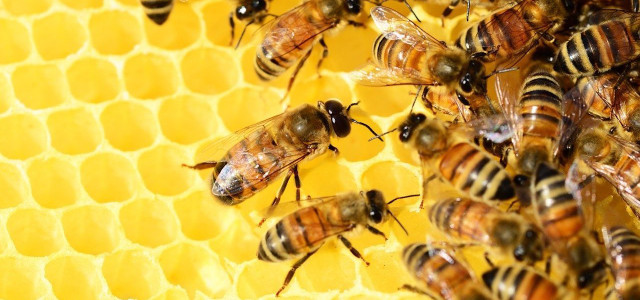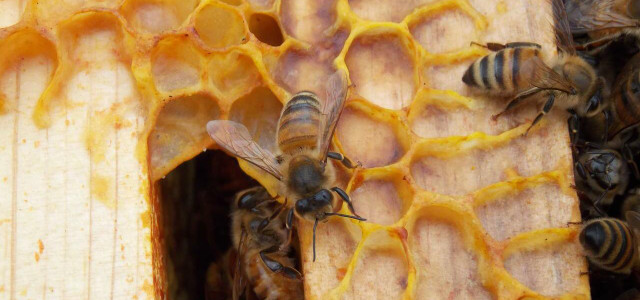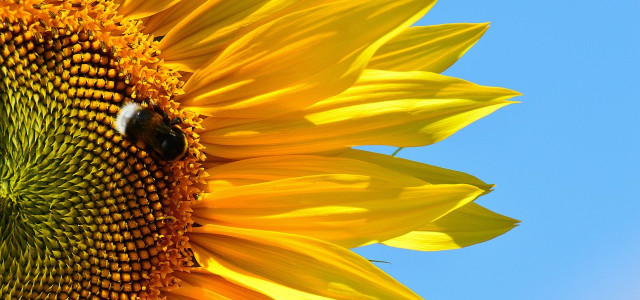These bumbling insects work wonders around our gardens. If you’ve ever wondered where bees go in winter or what happens to them, here’s everything you need to know!
So: where do bees go in winter? The short answer is that bees overwinter in their hives, nests or underground.
Overwintering is when an animal changes its behavior or activities to compensate for less food or energy use. While different species adapt to winter conditions in varying ways, like with hibernation or migration, bees typically go into a state of torpor.
- Interested in which animals hibernate? Check out these 15 Adorable Animals That Hibernate in Winter.
Torpor is a physiological state that the bees use to conserve energy, where they become inactive but not completely dormant (as with hibernation). They may reduce their metabolic activity, body temperature, and other aspects of their physiology to achieve this.
All bee species are important pollinators, but they differ in their behavior, habitats and physical characteristics. These various characteristics affect where bees go in winter and why. Below, we’ll look at several types of bees and explain the differences between them.
Where Do Honeybees Go to Winter?



Honeybees are social insects that live in large colonies and build complex hives or nests. They are known for their honey production and are polylectic, meaning they are generalists when it comes to which plants they will populate and collect from.
In other words, they can pollinate a wide variety of crops. Honeybee nests are found in a range of habitats, including fields, gardens, orchards and woodlands. They typically nest inside hollow trees, creating hives made of wax honeycombs.
Honeybees survive winter by forming a winter cluster within their nesting site. This cluster comprises worker bees, drones and the queen bee. Worker bees surround the queen in a tight ball, vibrating their wings to generate heat.
The heat generated by the bees in the cluster keeps the temperature inside the hive around 91° Fahrenheit, allowing them to survive even when outside temperatures drop below freezing. The bees also reduce their activity levels, so they consume less food and produce less waste, which conserves energy. They are never fully dormant.
Where Do Solitary Bees Go in Winter?



Solitary bees, as their name suggests, do not live in colonies and instead live alone or in small groups. They do not serve a queen or make honey. Instead, they create individual nests in the ground or in wood, such as tunnels in dead wood or hollow stems of plants.
Most solitary bees are polylectic. However, some are known as oligolectic, which means that they only collect pollen from certain varieties of plants. For example, squash bees only pollinate pumpkins, squash and gourds.
While the male bees collect pollen for sustenance, the females build the nesting ground for their young, who remain underground until they emerge in spring to continue this cycle.
During winter, solitary bees enter a special state of dormancy called diapause. This is where juvenile bees, fully grown but still in their cocoons, reduce their metabolic activity and become inactive. They use their body fat as their only source of food, so diapause helps them conserve energy and survive through the cold winter months.
Research suggests that solitary bees’ temperature and body condition during winter can affect when they emerge in the spring. Bees that experience warmer temperatures during diapause and have better physical conditions tend to emerge earlier in the spring than those that experience colder temperatures and have harder physical conditions.
Where Do Bumble Bees Go in Winter?
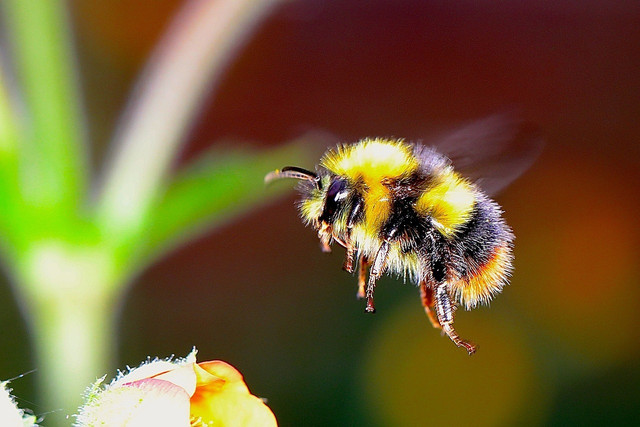


Bumble bees are social insects and live in smaller colonies than honey bees. They build nests in the ground or cavities in abandoned rodent burrows or dense grass tussocks. Like honeybees, they serve a queen, but they don’t make honey to the same extent. Bumble bees are polylectic and are found in many habitats, including gardens, meadows and woodlands, and are often seen buzzing around flowers.
Unlike other bees, bumble bee queens enter full dormancy or hibernation during winter. Bumble bees create protected hibernation chambers for mated young queens in underground burrows or holes in logs, where they can avoid freezing temperatures and harsh weather conditions.
In some species, queen bees from the previous fall will also hibernate during winter and emerge in the spring to establish new colonies.
How Can We Help Bees During Winter?
Bees face numerous challenges during winter, primarily due to the shortage of food, harsh weather and the lack of adequate shelter. Most plants are dormant through the winter months, and most flowers stop blooming, leading to a scarcity of nectar and pollen. This food shortage makes it difficult for bees to survive. Additionally, cold temperatures and strong winds can damage beehives and reduce bees’ ability to forage.
To help bees in winter, it is essential to provide them with suitable habitats, food and water sources.
- Shelter: Creating a bug hotel can provide bees with a warm and dry shelter during the winter months. Bug or bee hotels can be constructed using hollow stems, bamboo canes or drilled wooden blocks, which you can stack together to create a multi-level habitat.
- Water: Providing bees with a source of water is also crucial, especially during the winter when natural water sources are frozen. A simple way to provide water for bees is by creating a bee watering station using a shallow container filled with water and stones or twigs. The stones and twigs provide a landing spot for the bees to drink safely without drowning.
- Flowers: Another way to help bees during winter is by planting bee-friendly flowers in the garden. Bees rely on nectar and pollen from flowers to survive, so planting winter-blooming flowers such as winter honeysuckle, snowdrops and crocuses can provide bees with a vital food source. Bee balm is another plant that is easy to grow and provides nectar throughout the winter, making it an excellent addition to any garden.
So, where do bees go in winter? Home, to burrow in like the rest of us! But you can give them a better chance of survival by providing some of their overwintering needs. You can also give bees a boost in the summer by planting specific flowers for bumblebees and checking out these 10 small ways to help bees.
Read more:
- Native Gardening for Wildlife: Benefits and Tips for Beginners
- How to Plant Wildflower Seeds Step-by-Step
- What Do Wasps Do for the Environment? Do We Need Them?
Do you like this post?






